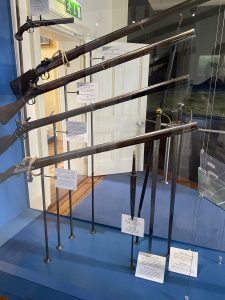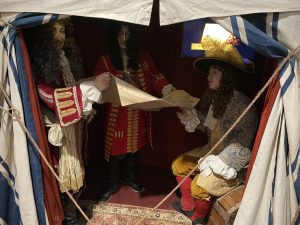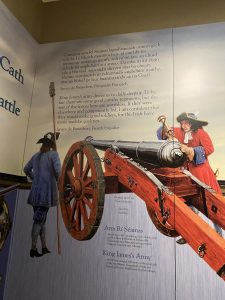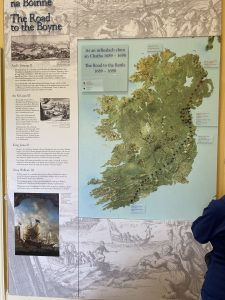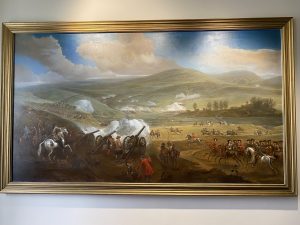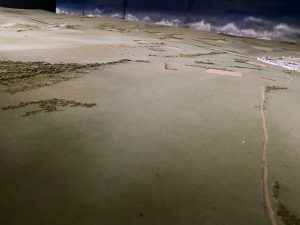Every year, for as long as I can remember, I’ve witnessed the celebrations around the 12th July in Northern Ireland in a state somewhere between bewilderment and discomfort.
But for me, after visiting the Battle of the Boyne visitor centre, I feel like some part of me has fallen into place, like a piece of my identity – previously broken – is now clear. And identity – we all know – matters.

The centre is very simple. There are three main exhibits which detail the before, during and after of the battle. Each provide a concise context, without the usual politically fraught biases, and give visual examples to illustrate what this meant: maps of the political allegiances; the dress and types of soldiers; quotes from key individuals involved in the battle. I particularly enjoyed the physical model which used lasers to show the troop movements during the battle. This was probably one of the best visual representations of a battle I’ve seen. You just have to forgive the cringy scenes in the video reenactment.
But the reason this exhibition was so impactful was the simple approach to history, dispelling the many myths which have surrounded the battle, instead letting the facts – as we know them – speak for themselves. It is dispassionate, wonderfully so. For me this was exactly what I needed and will have a far more enduring impact than any attempt to reshape history to suit contemporary politics. I am grateful for this and I’m sure many of you will be too.
What’s it about: The Battle of the Boyne took place on 1 July 1690 between the Protestant King William (ascended to King of England and Scotland in 1989) and Catholic King James II (deposed as King of England and Scotland in 1989) along the River Boyne in Ireland. The battle was significant for many reasons, but the immediate strategic significance was that King James II fled Ireland after his defeat and his forces abandoned Dublin. This was considered a critical turning point in the war which many historians consider as the beginning of the end of King James.
Advice to visitors: Great cafe and lots of good walks. Exhibition is buggy friendly. The walled gardens not so (I felt like I was pushing a steamroller up the gravel paths!). Also note it closes at 4 so time your visit accordingly.
For more on the centre see here.
For more of my posts please see here or to follow me on Twitter see here
